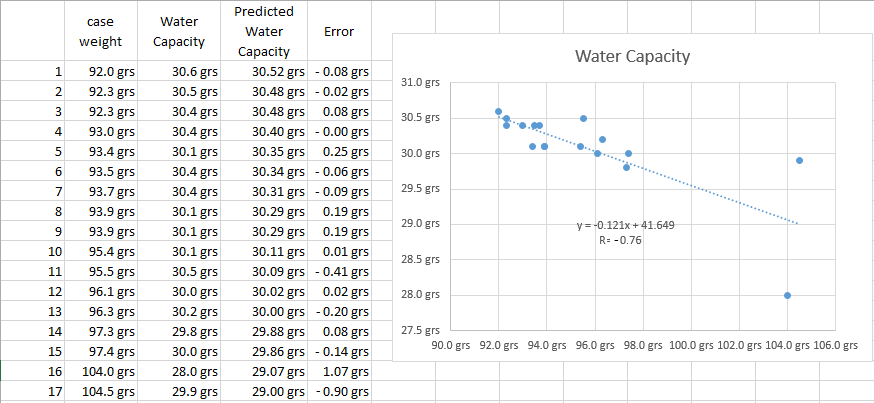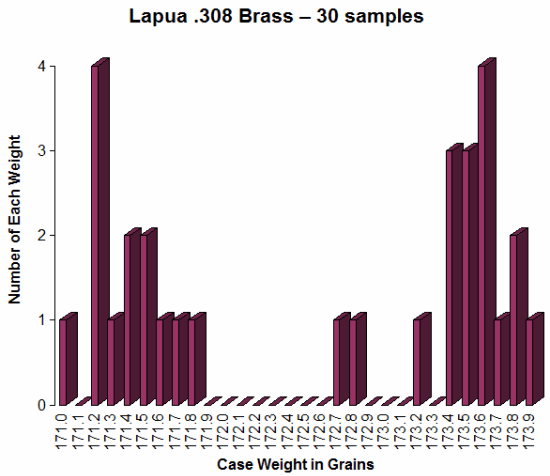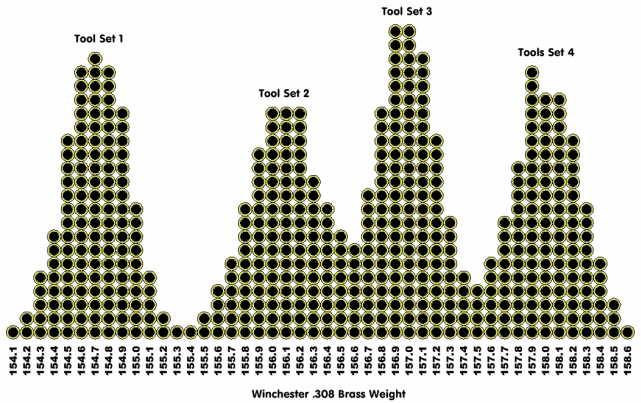Prof Young said:
Even if there are differences in case volumes the difference must be minute from case to case in a given caliber.
Actually that's not true with some chamberings. The worst offender is 300 Winchester Magnum. QuickLOAD's author found them so different among manufacturers that he actually has separate files for several of the brand names, not feeling it's right to treat them as the same exact chambering. He showed Remington brass with 88 grains of case water overflow capacity and Norma with 95.5 grains of case water overflow capacity, originally. I think Remington maybe went up to 89 grains in the last database update (not on that machine to check at the moment), but it could always go back the other way with future lots.
If the brass had the same exterior dimensions and were all made of the same alloy, that would be about 64 grains difference in case weight between Remington and Norma. The most I've seen in .30-06 is about 25 grains. In .308 Winchester it's been about 30 grains, though that grows to 40 if I take other people's measurements into account.
An old rule of thumb developed by Wm. C. Davis, Jr. in the 60's was it takes about sixteen grains difference in case weight to justify one grain difference in powder charge, with the objective being to keep pressure constant. I try to load for sweet spots that are in a band that allows at least 1.5% and preferably 2% change in charge weight before the rifle moves off the sweet spot. Staying on a sweet spot is more about keeping barrel time constant than pressure, and I find a factor of 14 grains of brass to 1 grain of powder comes closer than that. In the .300 WM, that works out to about 4.6 grains of powder charge difference between the Remington and Norma cases. In .308 Win it works out to about 2 grains difference from the lightest to heaviest cases I have. Its around 4-5% of charge weight in that chambering, so its enough difference to move me off a sweet spot if I don't adjust for case differences that great. It is, however, not enough to make a load dangerous if I fail to do it, as long as the original load was within SAAMI limits. If the original load was developed in a light case and was right on the edge of giving me sticky bolt lift, then the difference could be an issue for gun wear if not safety from case ruptures in some guns with a lot of unsupported case head. But that's not the norm.
In real life, case weight is never an exact indicator of water capacity unless the cases are all from the same lot. Outside dimensions of the head have to match. The density of the
alloy used to manufacture the cases has to match. It's not just a scale thing. I weighed a few different headstamp .308 cases one time and then measured their water overflow capacity and found the weight predicted their water overflow capacity to about ±20%. The .223 page on 6mmBR.com as a table of a good number of different headstamp cases they weighed and measured the case water overflow capacity of. There's a correlation, but like with my .308's, it just isn't very tight. I plotted the data from that site, below.

The other factor with weighing is it can sometimes tell you other things about the brass. In the example below, I weighed some Lapua cases in .308 Winchester, and arranged the data in histograms. You can see from the data that there were pretty clearly two different sets of tooling making the cases. That let me sort them by tooling to check if one set had a little bit better concentricity than the other so I could decide which tool set's output would be the match brass and which would be the load development and practice brass. Different tool sets may give different head thicknesses or different outside head dimensions that can affect the correspondence to case capacity. I was not, in this instance, able to get a significant difference. But since I had the output of the two tool sets segregated already, I kept them that way. Used one half then and the other half later. Only made a difference to the OCD side of me.

If I sorted by headstamp first and then by weight, a 1.4 grain spread would equal 0.1 grains of powder difference, and I don't normally dispense more accurately than ±0.2 grains, except during load development, so I'm not normally going to see a difference on cases sorted to the nearest grain.
If I have a bulk brass purchase that I want for an accuracy gun, I usually sort it by wall runout first. That matters a lot more, IMHO, than a few grains difference in weight. Then I sort by weight to look for indications of different tooling. Once separated by tooling, separating by weight then usually doesn't accomplish much as a bunch of brass off the same tooling for the same lot tends to be pretty close together in weight already.
If you want to check for tooling differences by weight, rather than Excel it as I did with the Lapua, just get a big piece of paper and write the weight range down in tenths of a grain and weigh and place each case over its weight on the paper. Groups of weights then become quickly apparent.



